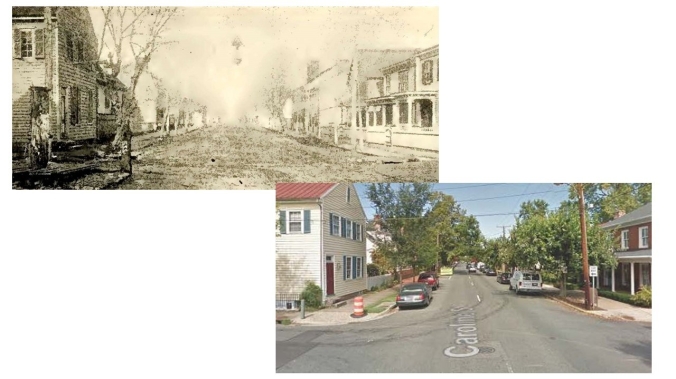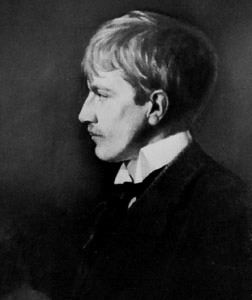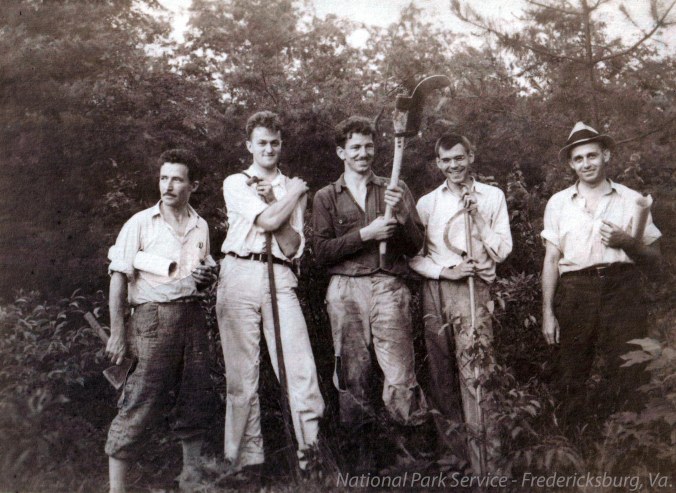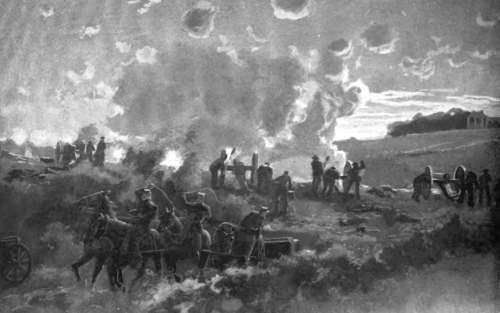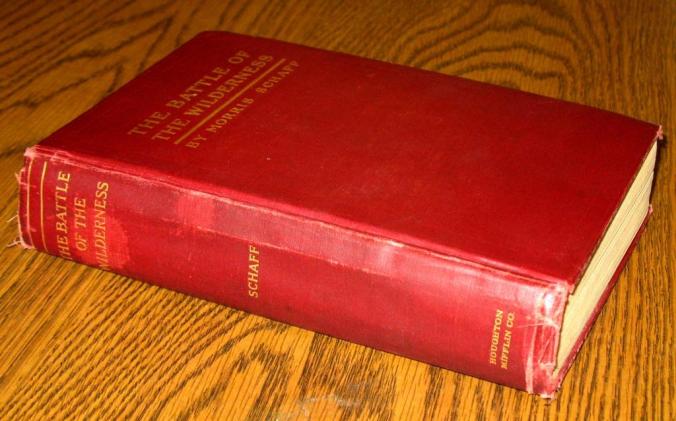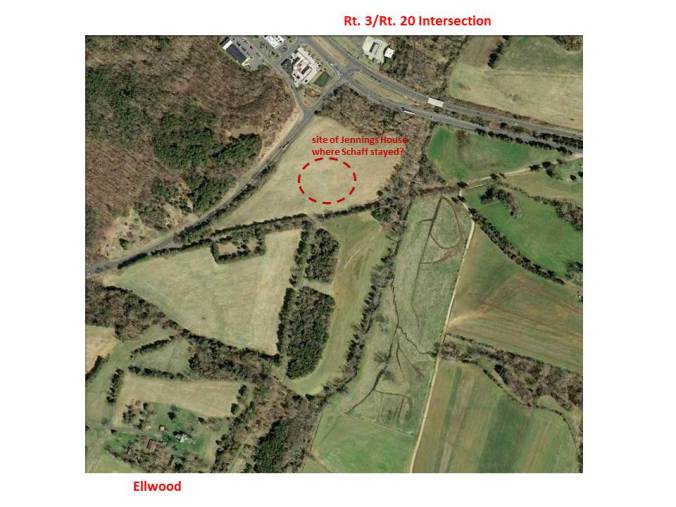from: Harrison
The secondary anniversaries of a battle —the anniversaries of its portrayals and interpretations as well as of its delayed impacts upon people—follow its principal anniversary. This summer finds us in the aftermath of not only the 154th anniversary of the December 1862 battle of Fredericksburg but also the 120th anniversary of the publication in 1896 of “The Little Regiment,” Stephen Crane’s short story inspired by that battle. The story garnered wide circulation initially but later fell under the broadening shadow of The Red Badge of Courage, his classic tale published in 1894-1895.
“The Little Regiment” first appeared in the United States in the June 1896 issue of McClure’s Magazine. (Chapman’s Magazine of Fiction offered “The Little Regiment” at the same time in Great Britain.) Stephen Crane had visited Fredericksburg sometime between January 12 and January 26, 1896, after McClure’s co-editor John S. Phillips requested a series on Civil War battlefields. Crane’s ensuing work produced several short stories about the war.

One of Isaac Walton Taber’s woodcuts from Stephen Crane’s fictionalized Fredericksburg, captioned with his text describing skirmishing prior to the main Union attack. “The Little Regiment,” McClure’s Magazine, June 1896: 13.
McClure’s published “The Little Regiment” with three woodcuts captioned with or positioned near the corresponding passages in Crane’s text. Advance publicity that ran in the magazine’s May 1896 issue described it as ”the story of a heroic charge at Fredericksburg,” and announced that famed historical artist Isaac Walton Taber, who published more than 250 illustrations the previous decade in Battles and Leaders of the Civil War and The Century magazine, would supply the woodcuts. Another overlooked aspect thus emerges when our perspective widens beyond The Red Badge of Courage: many early readers (McClure’s claiming a circulation of 300,000 in May 1896) encountered Crane’s visions of the Civil War—of Fredericksburg, at least—in art as well as in words.

Stephen Crane walked or rode past these Fredericksburg buildings during his January 1896 visit, four years after veterans of the Second Corps’ 14th Connecticut Infantry sponsored this informal photo. Center background, behind railroad car: wartime freight station of broad-gauge railroad (RF&P) connecting Fredericksburg with Washington and points north, upon which Crane arrived and departed. Right foreground: postwar passenger/freight station of narrow-gauge railroad to Orange (PF&P in the 1890’s, “Unfinished Railroad” in 1862). Left foreground: possible railing of Prussia Street bridge at or near site of millrace/canal-ditch bridge crossed by attacking Second Corps regiments—possible counterpart to one of the “little bridges” referenced in Crane’s story. Henry S. Stevens, Souvenir of Excursion to Battlefields (Washington, D.C., 1893), p. 82. Modern site of railroad-stations area from similar viewpoint and angle at Kenmore Avenue and Lafayette Boulevard: Google StreetView.
The Red Badge of Courage had appeared prior to Crane’s 1896 Fredericksburg trip–in print as a newspaper serial in December 1894 and as a book in October 1895. Obviously hoping to capitalize on this notoriety, McClure’s added “By the Author of The Red Badge of Courage” to Crane’s byline for “The Little Regiment” in June 1896. (The magazine’s advance publicity for the story, the month previous, had likewise highlighted the Red Badge connection and proclaimed that “no young man has made himself so felt in literature since Kipling,” contributor of another story to McClure’s June 1896 issue.) In November 1896, other publishers in America and Britain reprinted “The Little Regiment” in book-length compilations of six of Crane’s Civil War short stories, three penned for McClure’s and three for the Irving Bacheller syndicate.

Left: Stephen Crane in 1896, the year he visited Fredericksburg and published “The Little Regiment.” Right: Adolphe Menjou, who hosted a telecast of Crane’s story in 1954. Both: Wikimedia Commons.
Artists in media besides woodcuts would illustrate Crane’s fictionalized Fredericksburg. Although “The Little Regiment” has yet to rate a movie-length treatment, as Red Badge of Courage did in 1951, it did inspire a television program.
The series Favorite Story broadcast The Little Regiment as a half-hour teleplay in October 1954. Host Adolphe Menjou provided the introduction. A Star is Born, A Farewell to Arms, and Paths of Glory were among his past or future acting credits. Ellis Marcus, a prolific, future contributor to episodes of everything from Mission Impossible to Knots Landing and Lassie (my first television-addiction) adapted the teleplay from Stephen Crane’s story. Leon Benson—The High Chapparrall and Bonanza—directed. The 1954 show featured actors Russ Conway—destined for fame via The Virginian, The Fugitive, and Bonanza among other shows; John Doucette—The Big Valley, Get Smart, Mannix, The Big Valley; and Duane Gray—Gunsmoke, Bonanza, and Rawhide. The 1954 show was rebroadcast at least once, in September 1958.
Before offering further thoughts and spoilers, I encourage you to read the McClure’s June 1896 version of Crane’s “The Little Regiment,” beginning on page 2 of this public-domain pdf: The Little Regiment
(The entire, public-domain volume of McClure’s is here, including Crane’s June 1896 story. A public-domain version of “The Little Regiment” as collected in the November 1896 book is here.)
“The Little Regiment” in 1896 offered settings and general events nearly identical to those of the December 1862 battle, although Crane did not use the terms “Fredericksburg” or “Rappahannock,” or name the opposing commanders and armies. In 1967, Charles B. Ives noted abundant parallels to the historical battle, in one of the few scholarly articles devoted solely to “The Little Regiment”: Crane’s protagonists, brothers Dan and Billie Dempster, march and bivouac with their regiment (its state-affiliation and number not given in the story) on “the cold earth of December,” pause on the north side of a river listening to the bombardment of and preliminary fighting in a “little city”—called “town” and “village” elsewhere in the story—then cross to it over a pontoon bridge.
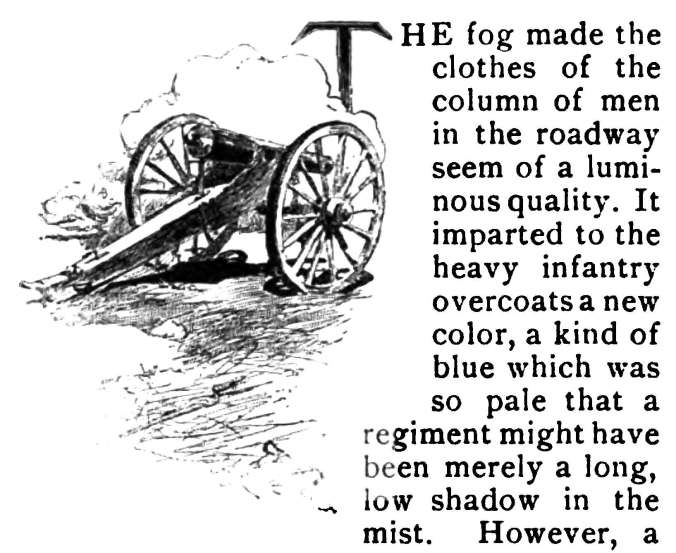
A Union cannon among the “long row of guns” that bombard the town at the start of Crane’s story. (The shadowing and orientation suggest that Taber adapted Alexander Gardner’s stereograph of a gun overlooking Belle Isle and Richmond.) “The Little Regiment”: 12.
In the town, Crane writes, “infantry and artillery were in a most precarious jumble in the streets.” Dan chats with a comrade “smoking his pipe of confiscated tobacco, seated comfortably upon a horse-hair trunk which he had dragged from the house.” Their conversation at one point references five of the six corps-numbers of the actual Army of the Potomac units engaged on the south side of the Rappahannock in December 1862. They go on to distinguish those from their own, unnamed corps—clearly the Second—which has also crossed to engage, as its real-life counterpart did in 1862. Nearby, another Federal “had chanced upon a hoop-skirt and arrayed in it was performing a dance amid the applause of his companions.” The men eventually move to “a dry old kitchen” despite its artillery damaged wall “strongly anxious to topple.”
The brothers then depart and return separately, as skirmishing occurs on the fringes of the town that night and the next day, prior to the main Union attack. (The story is unclear on whether Billie’s temporary absence represents his service on an actual picket-detail, or one imagined by his secretly worried brother.)
Crane’s account of Dan’s own, subsequent experience while detailed to the picket line includes illustration by the vivid woodcut I posted above. Even the limited but occasionally dramatic nature of skirmishing on December 12, 1862, the day before the main attack, thus finds a fictionalized counterpart in Crane’s narrative, in addition to the other historical parallels noted by Charles Ives. In 1886, William Kepler published a recollection of fighting on December 12 by men detailed from the Second Corps’ Fourth Ohio Infantry. Kepler described his and his comrades’ experiences along Hanover Street and around and west of the RF&P Railroad freight and passenger stations at Princess Anne and Prussia Streets:
[T]he details moved out on two different streets and were immediately fired upon on Hanover street, and Watson McCullough, of Company C, was wounded, causing a halt, and a sharp engagement until the squad on Princess Ann street…flanked the rebel pickets…advancing still further they noticed the depot and machine shops…under a shower of bullets coming from a new source, a railroad cut…the squad now crossed the bridge over a canal…moved to the right oblique to the house that was the furthest out of any…looking out the west window, they saw near at hand the pickets taking good aim, and firing on our men near Hanover street; the window was opened and a volley sent into the flank of a number of “graybacks” lying in a ditch, when there was a lively climbing and rushing to the rear by fifty or more Confederates, who did not stop until they were under the protection of their comrades, behind the stone wall….
Continue reading →
